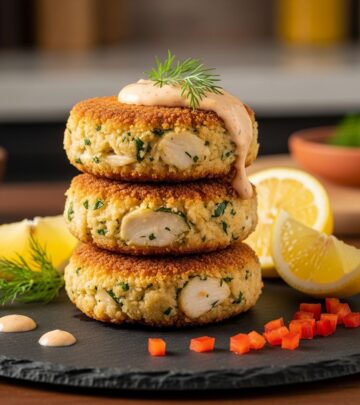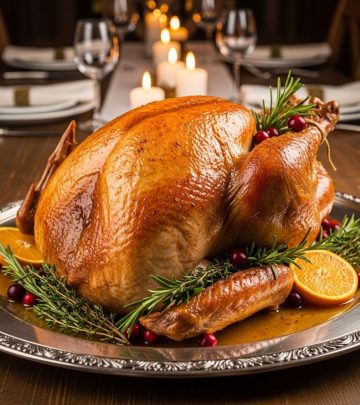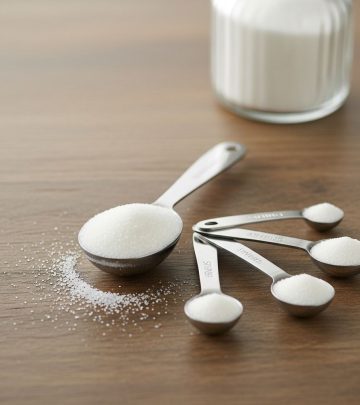How to Cook Bacon: Oven, Air Fryer, and Microwave Methods
Master bacon perfection with ease—explore oven, air fryer, and microwave cooking for crispy, delicious results every time.

Bacon is beloved for its unique combination of crispness, savoriness, and mouthwatering aroma. No matter if you’re preparing a leisurely weekend brunch or adding a smoky crunch to a weekday dish, choosing the best method to cook bacon can elevate your experience. In this comprehensive guide, we’ll explore how to cook bacon using three popular kitchen methods: the oven, air fryer, and microwave. Each technique offers distinct advantages, so you can find the perfect approach for your taste and kitchen routine.
Why Method Matters: Choosing Your Bacon Cooking Approach
From the classic skillet sizzle to modern hands-off approaches, the way you cook bacon impacts both flavor and texture. Here’s what to consider when selecting a method:
- Texture Preferences: Prefer ultra-crispy bacon or meatier, chewy slices? Some methods enhance crispness while others preserve chew.
- Quantity: Feeding a crowd or making a few strips? Oven and air fryer methods handle larger batches, while the microwave is perfect for speed and single servings.
- Cleanup: Ovens and microwaves tend to reduce splatter; frying pans require more post-cook cleaning.
- Time: Air fryers and microwaves are fast. Ovens take longer, but require less attention.
Let’s dive into each method with detailed instructions, essential tips, and expert troubleshooting for getting your bacon exactly how you want it every time.
How to Cook Bacon in the Oven
Oven-baked bacon is widely recommended for its reliability and ability to produce evenly cooked, crispy slices with minimal effort. It’s ideal when cooking for a group, or anytime you want to multitask while your bacon cooks hands-free.
Benefits of Oven Cooking
- Even Cooking: Bacon cooks uniformly, avoiding burnt edges and undercooked centers.
- Minimal Mess: No need to contend with stove-top splatter.
- Batch Cooking: Easily make an entire package at once—perfect for brunches or meal prep.
- Easy Cleanup: Lining your pan with parchment paper or foil means faster cleaning.
Step-By-Step Oven Bacon Instructions
- Preheat your oven: Set to 400°F (204°C) for crispy results. For less crispiness, you can reduce to 375°F.
- Prepare the baking tray: Line a rimmed baking sheet with parchment paper or foil for easy tray cleanup. For even crisper bacon, place a metal wire rack over the tray and lay the bacon on top; this lets the fat drip away during cooking.
- Arrange the bacon: Lay bacon strips in a single layer. Edges can slightly touch, but avoid overlapping for the most even cook.
- Bake: Cook in the preheated oven for 10–20 minutes, checking at the 10-minute mark for thinner bacon or 15 minutes for thicker cuts. Don’t walk away completely—oven times can vary!
- Drain and serve: Using tongs, transfer bacon to a paper-towel-lined plate to absorb excess fat before serving.
| Desired Crispness | Cooking Time |
|---|---|
| Chewy/flexible | 10-12 minutes |
| Crispy | 14-16 minutes |
| Extra crispy | 17-20 minutes |
Expert Tips for Oven Bacon
- Thick vs. thin cut: Thicker bacon may need longer (check in 2-minute increments after 15 minutes).
- Save the fat: Pour rendered bacon grease through a fine-mesh sieve into a heatproof jar for future cooking.
- No wire rack? Bacon will still get crispy, but you may want to flip it after 10 minutes for evenness.
- Watch for doneness: Ovens vary; keep an eye from the 10-minute mark onward to prevent burning.
How to Cook Bacon in the Air Fryer
The air fryer has quickly become a favorite for quick, crispy bacon with minimal splatter. Its high-speed hot air mimics deep frying, making it ideal for smaller batches and fast results.
Benefits of Air Fryer Cooking
- Speedy results: Typically ready in 8–10 minutes.
- Extra crispiness: Air circulation ensures every side gets crispy.
- Less mess: Most air fryers contain the bacon and fat with little splatter.
- Hands-off method: No flipping or rotating required (for most baskets).
Step-By-Step Air Fryer Bacon Instructions
- Preheat your air fryer: Set to 360°F to 400°F, depending on how crispy you want it (360°F for chewy, 380–400°F for crispy).
- Add bacon: Lay strips in a single layer in the air fryer basket, allowing air to circulate. You may need to work in batches depending on your air fryer’s size.
- Cook: Air fry for 8–10 minutes, checking halfway to rearrange slices if necessary. Remove or add time based on personal preference and thickness.
- Drain and serve: Use tongs to transfer cooked bacon to a paper-towel-lined plate for draining.
Expert Tips for Air Fryer Bacon
- Basket crowding: For maximum crispiness, do not overlap slices.
- Remove excess fat: Pause halfway to carefully drain bacon fat from below the basket if needed to reduce smoking.
- Check for doneness: Air fryers vary; start checking from 7 minutes onward.
- Clean promptly: Bacon grease can settle in your air fryer’s bottom. Clean while warm for easiest removal.
How to Cook Bacon in the Microwave
When time is short, microwaving bacon is the ultimate convenience. This method is ideal for a few quick slices and is popular for smaller batches on busy mornings.
Benefits of Microwave Cooking
- Ultra fast: Bacon is ready in just a few minutes.
- Minimal cleanup: No greasy pans to scrub—just dispose of the used paper towels.
- Hands-free: No need to stand at the stove flipping slices.
- Great for one or two servings: Perfect for singles, kids, or quick sandwiches.
Step-By-Step Microwave Bacon Instructions
- Prepare your plate: Line a microwave-safe plate with two or three layers of paper towels.
- Add bacon: Arrange up to 4–6 strips of bacon in a single layer on the paper towels (the slices can be close, but should not overlap).
- Cover: Place one or two additional paper towels on top.
- Microwave: Cook on high power for 1 minute per slice, or until desired crispness. Start with 3–4 minutes for four slices; add more time for higher wattage or thicker bacon, checking every 30 seconds after 4 minutes.
- Drain and serve: Carefully remove bacon (it will be hot!) and serve immediately.
Expert Tips for Microwave Bacon
- Paper towel layer: Use enough to absorb grease for crispiness and less mess.
- Microwave-safe plate: Always use a heat-proof, non-metal plate.
- Doneness check: Bacon continues to crisp as it cools. Slight undercooking may be best if you want less brittle pieces.
- Batch size: Reduce the number of slices for older or less powerful microwaves for best results.
Comparison Table: Oven vs Air Fryer vs Microwave
| Method | Best For | Batch Size | Crispiness | Ease of Cleanup | Time Needed |
|---|---|---|---|---|---|
| Oven | Hosting groups, meal prepping | Large | Very crisp, even | Easy (with foil/paper) | 10–20 min |
| Air Fryer | Quick, extra crispy bacon for 1–3 people | Small–medium | Ultra crisp | Moderate (requires appliance cleaning) | 8–10 min |
| Microwave | Speed, single servings | Small (1–6 slices) | Crispy but delicate | Easy (toss paper towels) | 3–6 min |
Troubleshooting & Frequently Asked Questions
Why is my bacon burning or undercooking?
Kitchen appliances vary widely. It’s essential to check your bacon early and adjust cooking times as needed, especially the first time you use a new method. For uneven cooking, try rearranging bacon strips or rotating the tray or basket halfway through.
Which method makes the crispiest bacon?
While oven and air fryer methods both excel for crispiness, the air fryer creates the most consistently crispy slices, as it circulates air around each strip. The microwave creates crispy bacon too, but the texture can be slightly more brittle.
How do I minimize smoke or smell?
Cooking bacon at lower temperatures (especially in the oven) reduces smoke. Make sure to drain accumulating fat during air frying if needed to reduce smoking. Ensure your exhaust fan is running and keep kitchen windows open if possible.
Can I add flavors to my bacon?
Absolutely! Before cooking, sprinkle bacon with brown sugar, black pepper, maple syrup, red pepper flakes, or your favorite spices. Oven and air fryer methods work best for ‘candied bacon’ because the sugar can caramelize without burning quickly.
Can I save bacon grease? How?
Let the bacon fat cool slightly, then carefully pour through a fine-mesh strainer into a heatproof glass container (never plastic). Refrigerate and use for sautéing, roasting, or adding savory flavor to other dishes.
Essential Cleaning and Safety Tips
- Carefully handle hot trays/baskets/plates: Use oven mitts and tongs to prevent burns.
- Clean up immediately: While still warm (not hot), wipe or pour off excess grease to prevent sticking.
- Dispose of grease responsibly: Do not pour bacon grease down the drain. Instead, collect in a disposable container or jar and discard when full.
- Ventilate: Open kitchen windows or use fans when frying or baking for better air quality.
Serving Suggestions for Cooked Bacon
- Breakfast classic: Serve with eggs, pancakes, or waffles.
- Salad topper: Crumble over green or pasta salads for a savory crunch.
- Bacon-wrapped delights: Use for wrapping dates, shrimp, or chicken.
- Sandwich booster: Add to burgers, BLTs, or grilled cheeses.
- Bacon bits: Chop and store crisp bacon in the fridge for quick garnishes all week.
Bonus: Top Tips for Bacon Lovers
- They freeze well: Cook extra bacon and freeze for up to 3 months—reheat in seconds in the microwave.
- For softer bacon: Reduce heat or remove a minute sooner from oven or air fryer.
- Try different cuts: Experiment with thick-cut, applewood-smoked, or center-cut varieties for new flavors and textures.
- Bacon for desserts: Candied or chocolate-dipped bacon makes a surprising sweet-and-savory treat.
Frequently Asked Questions (FAQs)
Q: Can I cook turkey or vegan bacon with these methods?
A: Yes, these methods all work with turkey or plant-based bacon. Adjust cook times slightly—these varieties generally cook faster than pork bacon and can become dry if overcooked.
Q: What’s the best method for the least mess?
A: The oven and microwave methods produce the least splatter and require minimal clean up, especially when using parchment or paper towels.
Q: Can I use parchment paper in the air fryer?
A: Some air fryers allow special perforated parchment paper for non-stick purposes, but check your model’s manual. Never use regular paper towels or foil in the air fryer as these can block airflow or cause hazards.
Q: How do I store leftover cooked bacon?
A: Store cooked bacon in an airtight container in the refrigerator for up to 5 days, or freeze for longer storage. Reheat in microwave or oven for best crispiness.
Q: How do I avoid rubbery bacon?
A: Rubberiness results from undercooking or overcrowding. Always cook in a single layer and extend cooking time for desired crispness.
Conclusion: Bacon Success for Every Kitchen
Whether you’re a bacon traditionalist or modern appliance enthusiast, these oven, air fryer, and microwave techniques guarantee tasty results with easy cleanup and customizable crispiness. Try them all, discover your personal favorite, and enjoy perfect bacon any day, for any occasion.












